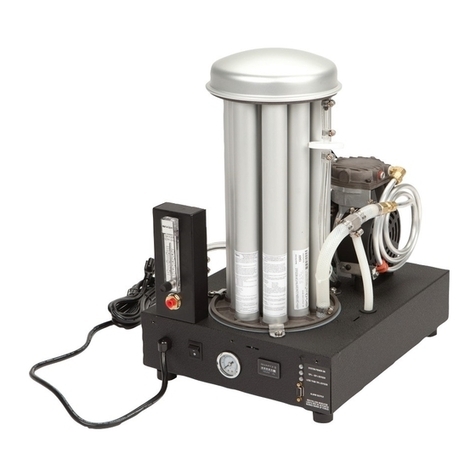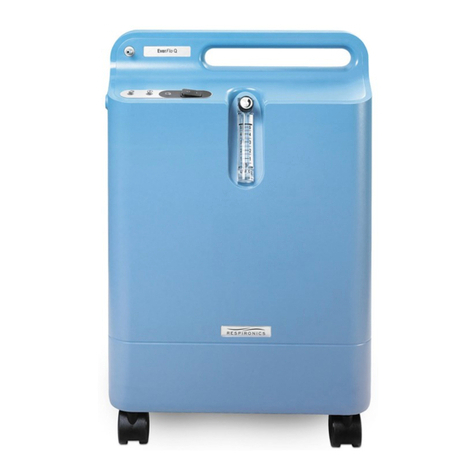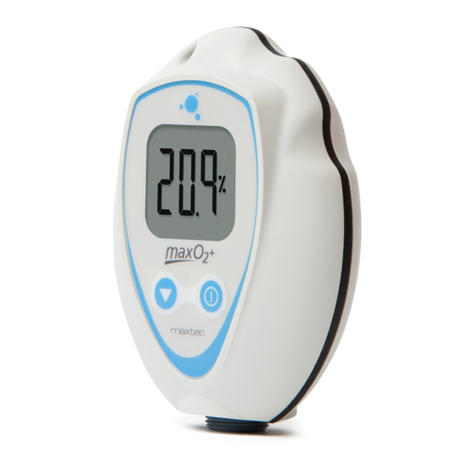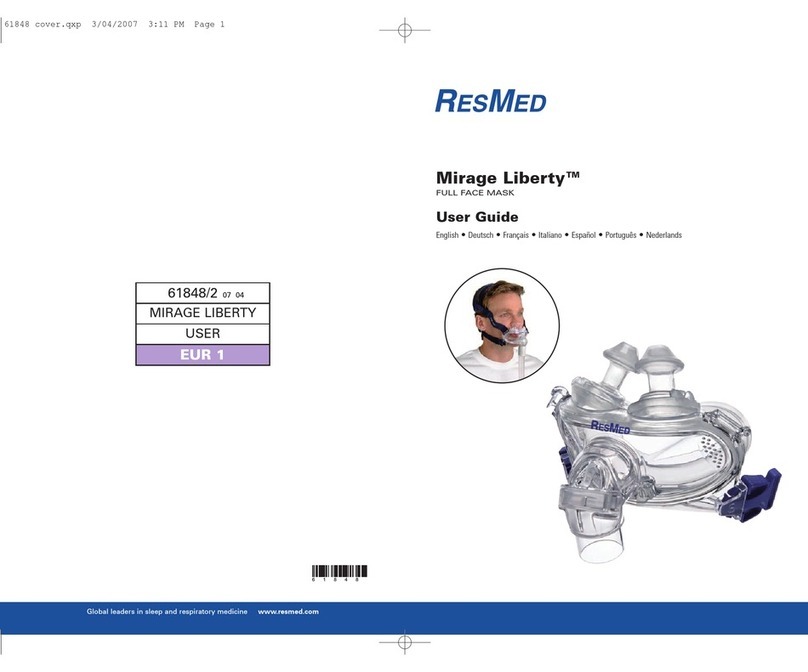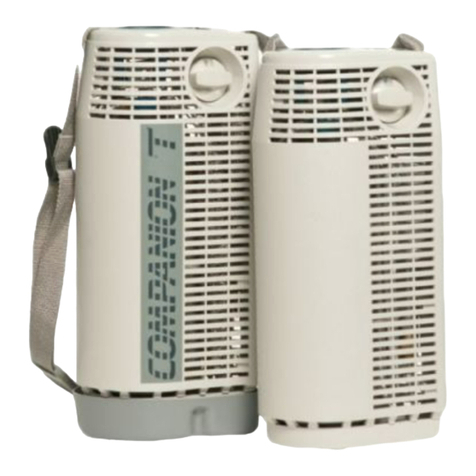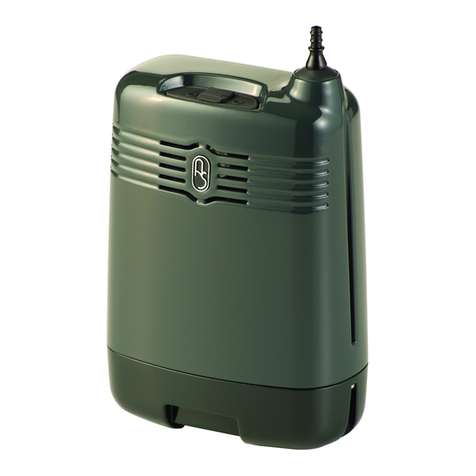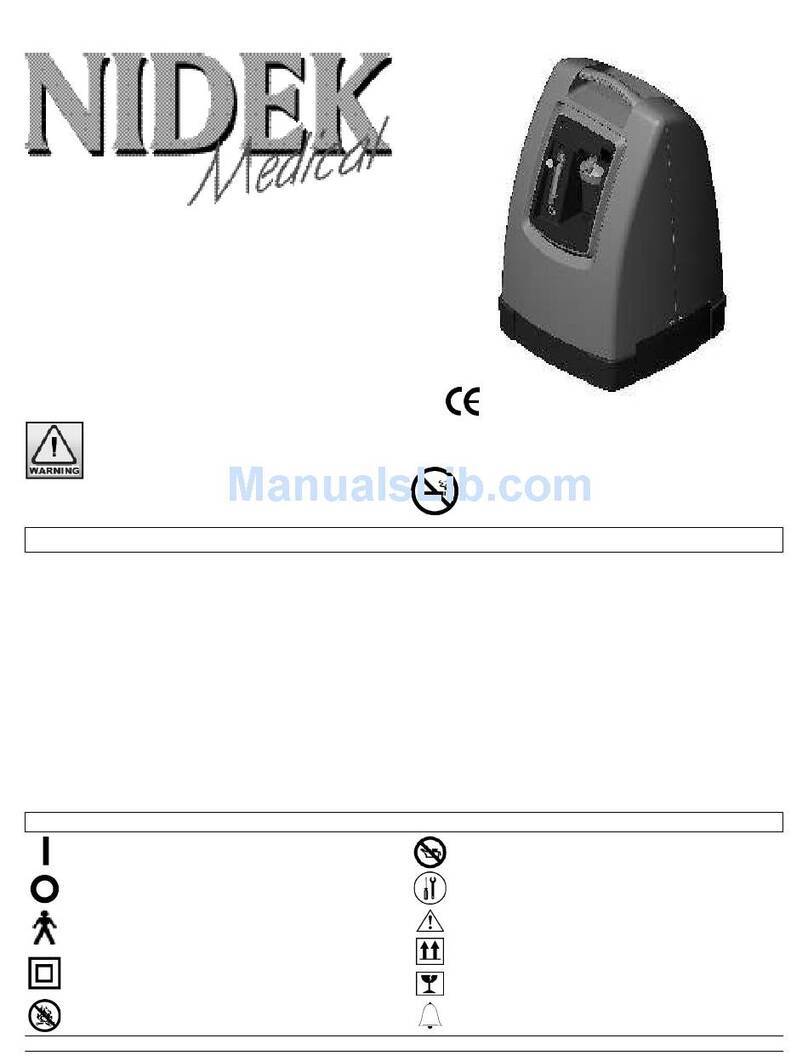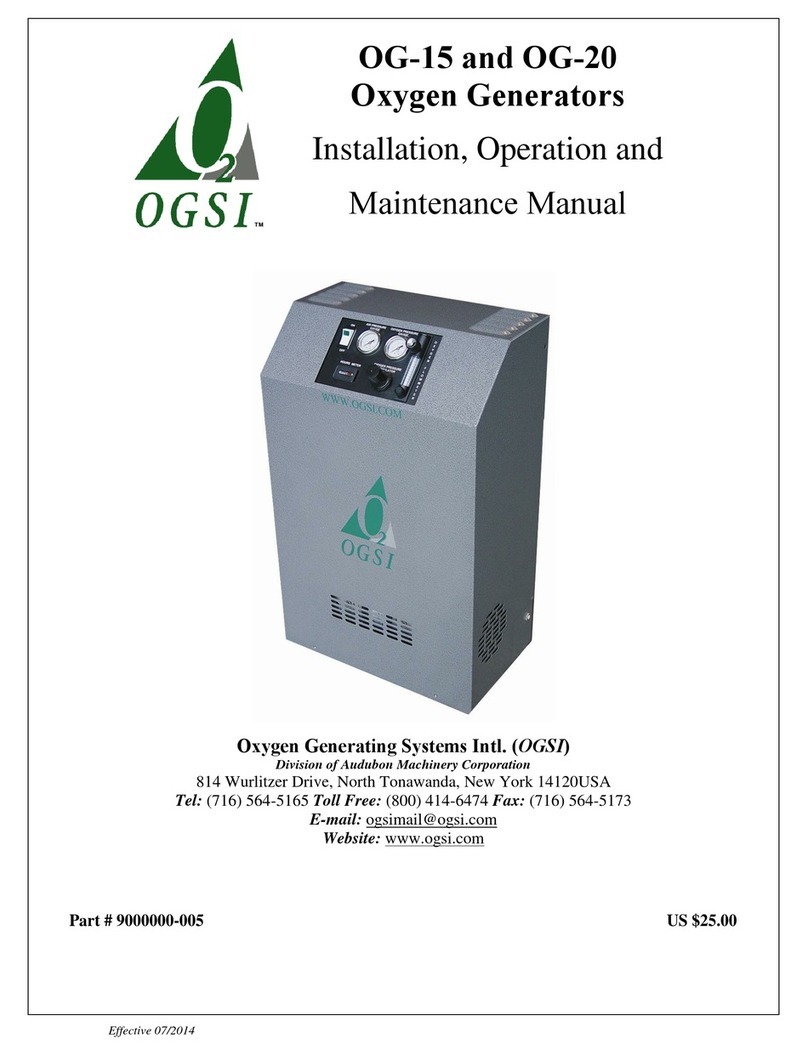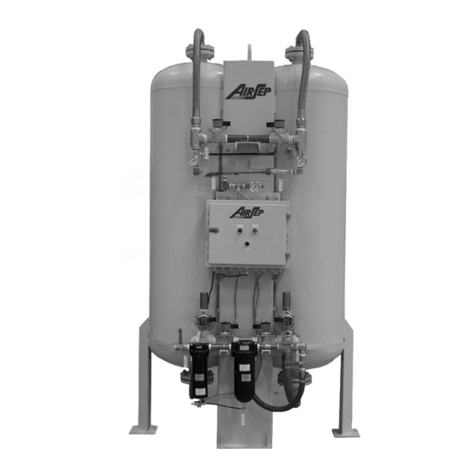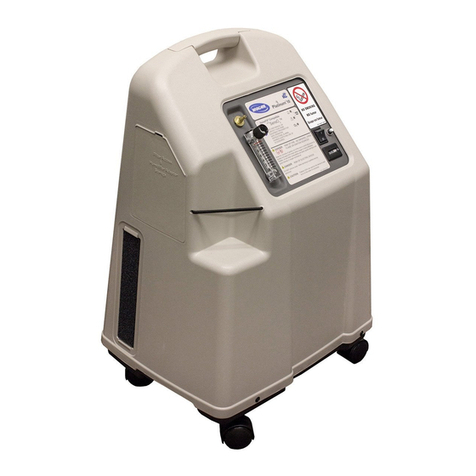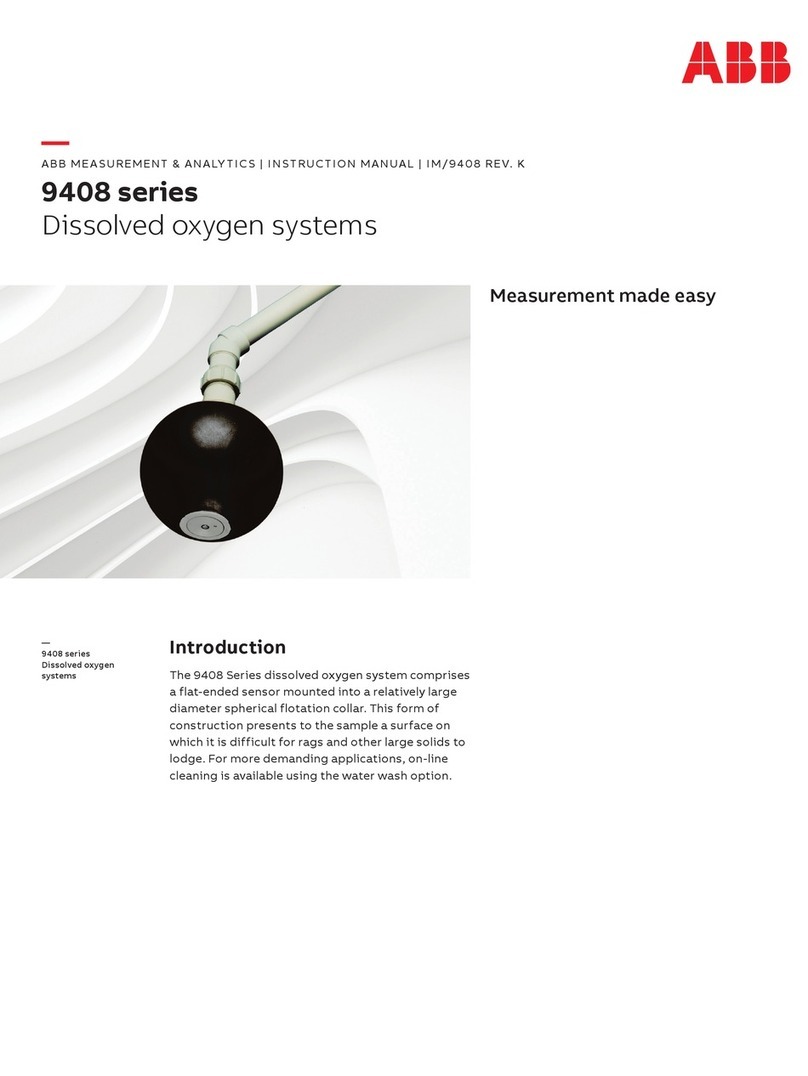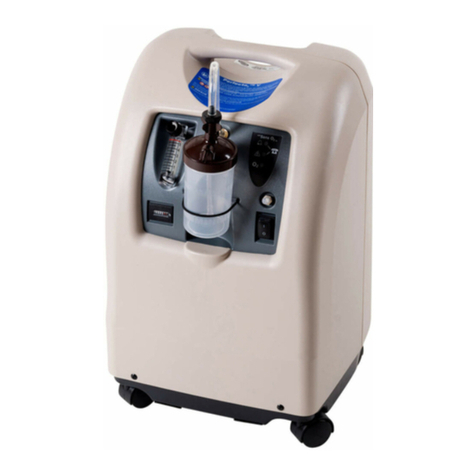
Effective 11/2010 3
Warranty
Oxygen Generating Systems Intl., being a division of Audubon Machinery
Corporation (hereinafter OGSI), provides a warranty on its products (the "Products")
against defects in material and workmanship, under normal use and operation, to the
extent set forth in this Warranty.
THIS WARRANTY IS THE SOLE AND EXCLUSIVE WARRANTY OF OGSI WITH
RESPECT TO THE PRODUCTS AND IS IN LIEU OF ALL OTHER WARRANTIES EXPRESSED OR
IMPLIED ALL OF WHICH ARE HEREBY DISCLAIMED TO THE FULLEST EXTENT PERMITTED
BY APPLICABLE LAW. WITHOUT LIMITING THE GENERALITY OF THE FOREGOING
DISCLAIMER AND EXCEPT AS OTHERWISE SET FORTH IN THIS WARRANTY, OGSI
DISCLAIMS ALL WARRANTIES OF MERCHANTABILITY WITH RESPECT TO THE PRODUCTS
AND ALL WARRANTIES OF FITNESS FOR A PARTICULAR PURPOSE. THE WARRANTY OF
OGSI AS SET FORTH HEREIN IS FOR THE BENEFIT OF THE ORIGINAL USER OF THE
PRODUCTS AND IS NOT TRANSFERABLE WITHOUT THE PRIOR EXPRESS WRITTEN CONSENT
OF OGSI.
The OGSI Warranty provides the following:
1) OGSI shall repair or replace the Products free of charge to the original user where
defects in the material and/or workmanship are evident at the time of delivery.
Such replacement of the Products does not include damages incurred in shipping
the Products. If shipping damage is evident, the original user should contact the
shipper immediately. OGSI will pay for shipping the Products to the original user
as well as returning damaged/defective Products to OGSI. Once the Products are
repaired, OGSI will ship the Products back to the original user and cover all costs
incurred in shipping.
2) OGSI shall repair or replace the Products (excluding filter elements and sieve
material) free of charge to the original user where defects in material and/or
workmanship become evident between the time of delivery to the original user
and one (1) year from the date of delivery to the original user. OGSI will pay for
shipping the Products to the original user as well as returning damaged/defective
Products to OGSI. Once the Products are repaired, OGSI will ship the Products
back to the original user and cover all costs incurred in shipping. In no event
shall OGSI have any responsibility or liability for the cost of labor for the
removal of component parts or equipment that constitute part of the Products,
packaging of the component parts or equipment that constitute part of the
Products or the re-installation or replacement of the component parts or
equipment that constitute part of the Products.
3) The warranty provided by OGSI to the original user covers parts and equipment
specifically manufactured by OGSI and used as components or equipment that
constitute part of the Products. The warranty on parts or equipment manufactured
by third parties and included as part of the Products (e.g. air dryers, air
compressors, oxygen compressors, instrumentation, etc.) is limited to the
respective original warranties of such third parties.
Note: A Return Authorization Number must be obtained from OGSI prior to the return
shipment of the Product or any component parts or equipment of the Products.
